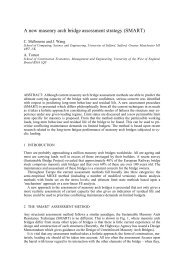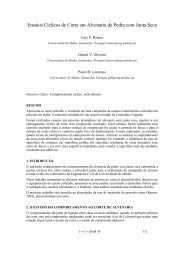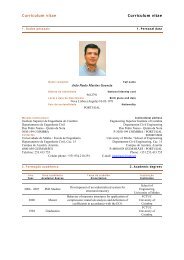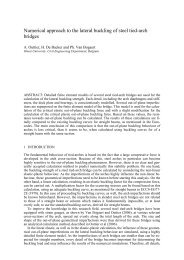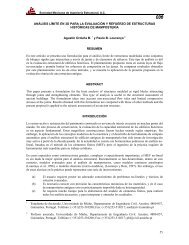Sustainable Construction A Life Cycle Approach in Engineering
Sustainable Construction A Life Cycle Approach in Engineering
Sustainable Construction A Life Cycle Approach in Engineering
Create successful ePaper yourself
Turn your PDF publications into a flip-book with our unique Google optimized e-Paper software.
The results of pairwise comparisons are used to def<strong>in</strong>e judgment matrices, also called Pairwise<br />
matrices or P matrices.<br />
Each entry p ij of these matrices corresponds to the number that estimates accord<strong>in</strong>g to selected<br />
scale the relative performance (or weights of importance) of entity E i when it is compared<br />
with E j . Entities can be represented by alternatives A i or criteria C i that have to be compared<br />
<strong>in</strong> terms of selected criterion or decision goal.<br />
E E E E E<br />
1 2 3 4 n<br />
E p p p<br />
... ... ...<br />
E<br />
<br />
2<br />
p21<br />
P <br />
nxn<br />
<br />
1 11 12 1n<br />
<br />
E<br />
<br />
p p<br />
n m1 mn<br />
<br />
<br />
<br />
<br />
<br />
<br />
(5)<br />
The matrix of pairwise comparisons is reciprocal, be<strong>in</strong>g p ij =1/p ij and p ii =1. In case it is possible<br />
to have exact value of p ij = w i /w j , with w i actual weigth of importance of entity E i , the matrix<br />
[P] is consistent, that is p ij =p ik·p kj . It can be shown that for real values of p ij the rank of [P] is 1<br />
and that λ=n is the pr<strong>in</strong>cipal eigenvalue. When the values of p ij are close to actual ones but different,<br />
which is the most common case <strong>in</strong> applications, the [P] matrix is not consistent, the rank<br />
is greater than 1 and the maximum eigenvalue λ max is greater than or equal to n.<br />
It can be demonstrated that the normalized pr<strong>in</strong>cipal eigenvector w of P matrix that corresponds<br />
to the maximum eigenvalue λ max represents the vector (a i1 , a i2 ,…., a <strong>in</strong> ) with relative performance,<br />
or weights, of compared entities, that is the i-th colum of matrix [A] or the vector of<br />
relative weights of criteria.<br />
In particular, it results:<br />
<br />
P w w with max n<br />
(6)<br />
max<br />
w=(a<br />
i1, a<br />
i2,..., a<br />
<strong>in</strong>)<br />
(7)<br />
A simplified calculation of eigenvector w can be performed by multiply<strong>in</strong>g the entries <strong>in</strong><br />
each row of matrix P together and tak<strong>in</strong>g the n-th root. In order to have values that add up to 1,<br />
a normalization by the sum of obta<strong>in</strong>ed values has to be carried out. A simplified procedure to<br />
obta<strong>in</strong> λ max is to add the columns of matrix P and the multiply<strong>in</strong>g the result<strong>in</strong>g vector with w.<br />
To estimate the consistency of pairwise comparison matrix, Saaty proposed the Consistency<br />
Ratio CR, obta<strong>in</strong>ed divid<strong>in</strong>g the consistency <strong>in</strong>dex by the Random Consistency Index RCI given<br />
<strong>in</strong> table 2.<br />
CI is def<strong>in</strong>ed as follows:<br />
CI ( n)/(n 1)<br />
(8)<br />
max<br />
RCI is an average random consistency <strong>in</strong>dex derived from randomly generated reciprocal matrices.<br />
Accord<strong>in</strong>g to Saaty, the CR should be less than 10% <strong>in</strong> order to have consistency <strong>in</strong> pairwise<br />
judgments.<br />
Table 2. RCI values of sets of different order n.<br />
n 1 2 3 4 5 6 7 8 9<br />
RCI 0 0 0.58 0.9 1.12 1.24 1.32 1.41 1.45<br />
180


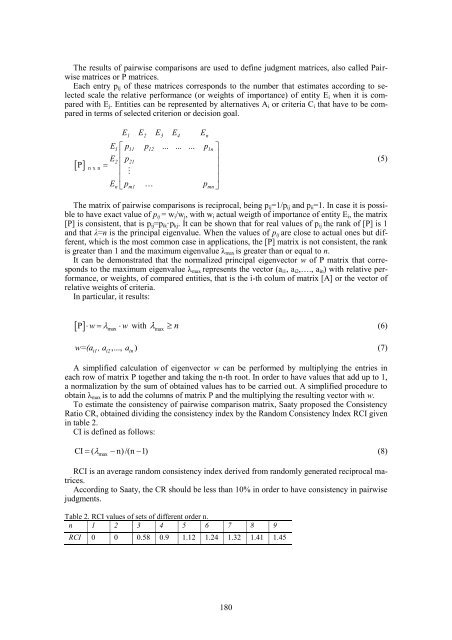
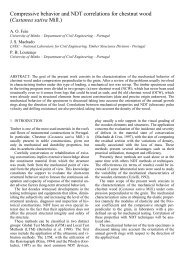
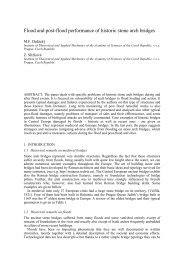
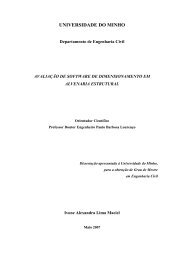
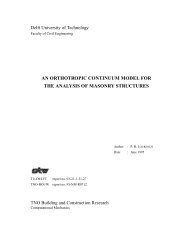

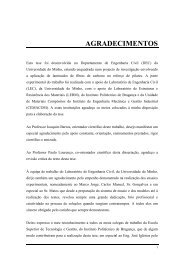

![Weibull [Compatibility Mode]](https://img.yumpu.com/48296360/1/190x134/weibull-compatibility-mode.jpg?quality=85)

